Canon HF G70 review: a compact camcorder for enthusiasts
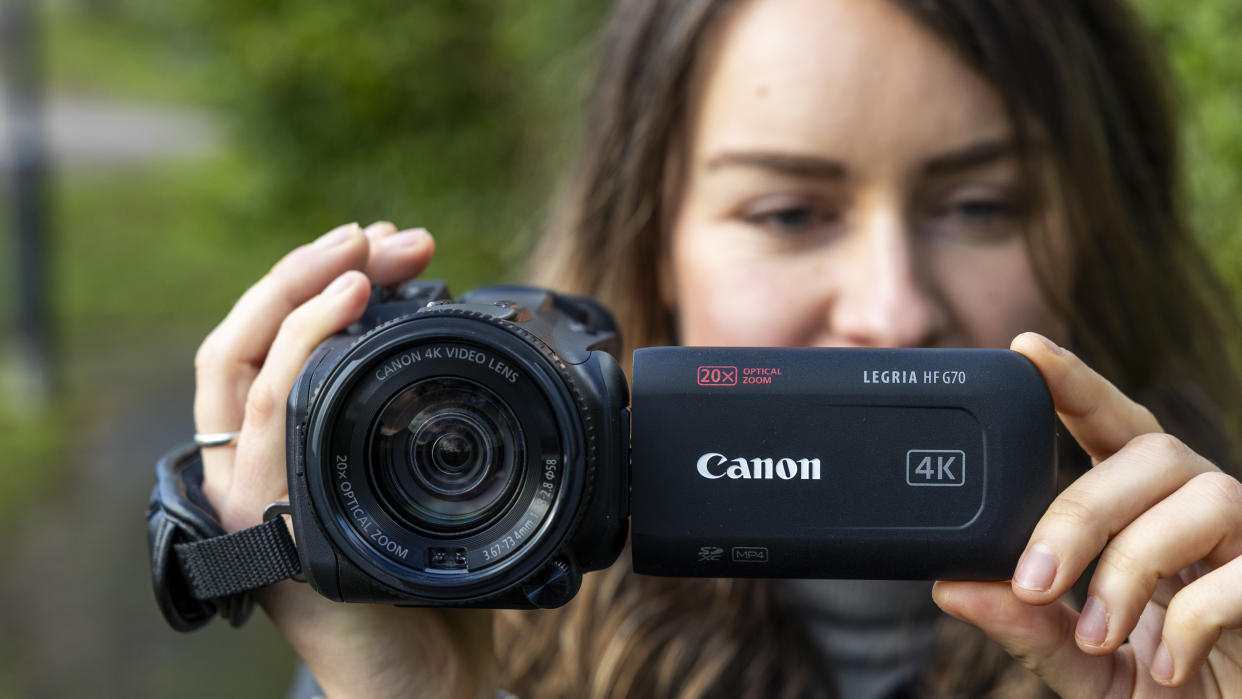
When I was young, before smartphones or mirrorless cameras were invented, camcorders were an essential way to record life's big events. I remember them coming out at weddings, christenings, parties, or when you (I) wanted to demonstrate my directing skills and make a home movie. For serious broadcasters, camcorders were and still are ideal for documentaries and news, as the convenience of an all-in-one device trumps having the best quality.
But to my mind, if you're a prosumer in 2023 – somewhere past a beginner but not quite a professional – having a camcorder feels like an outdated concept. After all, the best hybrid cameras can capture high-end video, the best phone for video recording will be good enough for social media, and the best cinema cameras are there for big-budget productions.
So do camcorders still have a place? The current lineup from modern manufacturers suggests so – with Panasonic, Canon, and Sony all offering a range of options for enthusiasts. The Canon HF G70 sits at the higher end of these (sold in the Vixia range in the USA, and under the Legria sub-brand in Europe), but it's still a traditional video camera sharing many issues that have made the format fall out of favor.
Canon HF G70: Specifications
Max resolution: 3840 x 2160 px
Sensor: 1/2.3-type CMOS
Total pixels: 21.14MP
Zoom: 20x optical
Memory type: 2 x SDHC cards
Dimensions: 109 x 84 x 182 mm
Weight: 740g
If you're focused on video, the best camcorder can offer many handling benefits over the best camera for video. Camcorders typically have big built-in zooms, and because their controls, buttons, and overall design are dedicated to video recording, they make it easy to stop and start recording, zoom in and out while filming, and monitor audio levels.
The Canon HF G70 is aimed at the sort of people who might want to record their favorite sports team, a wedding, or film a documentary for YouTube without swapping lenses or worrying too much about file types and log profiles. Its headline features include a 20x optical zoom, 5-axis image stabilization, and 4K UHD video footage, oversampled from full HD quality. Several years ago these specs would have been more impressive, but mirrorless cameras have advanced so much that they sit fairly average among camcorders at this price.
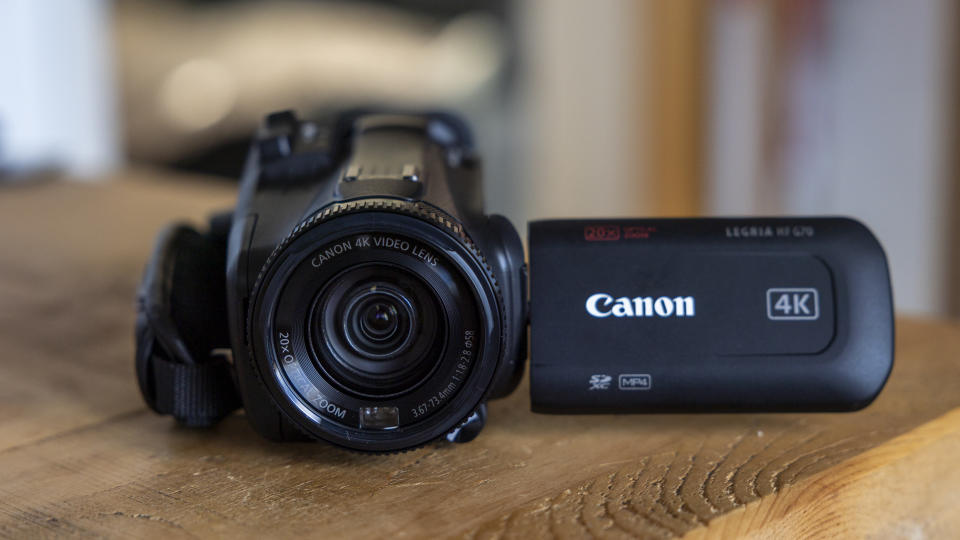
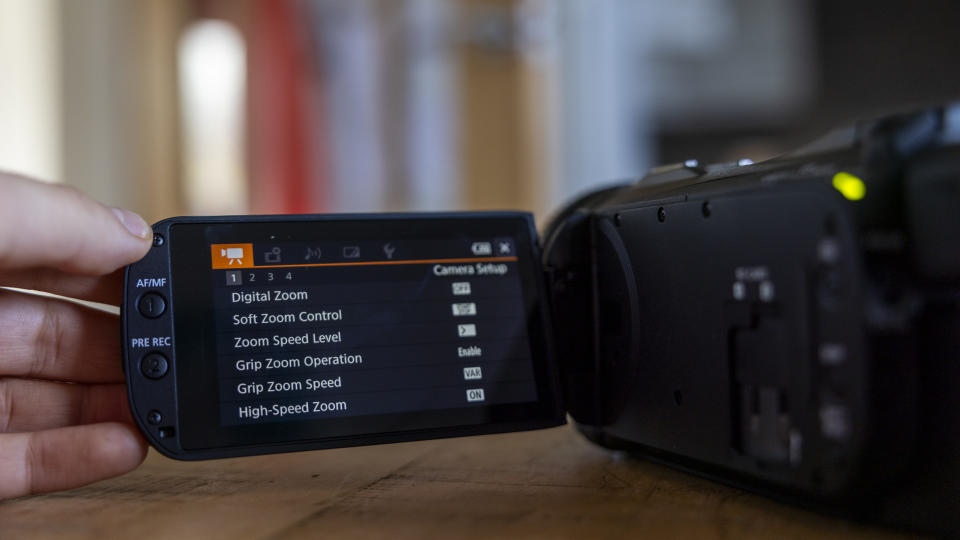
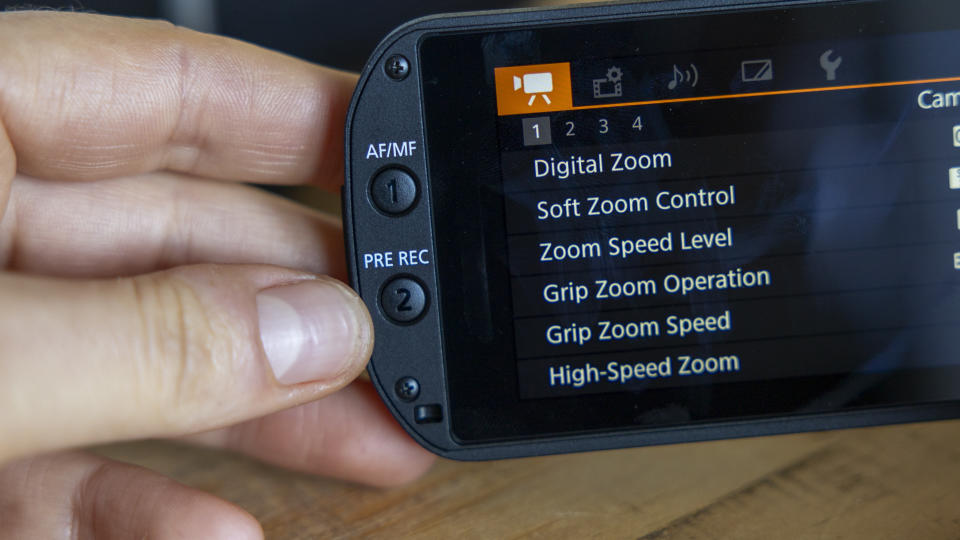
The HF G70 is Canon's flagship consumer camcorder and is called the Vixia HF G70 in North America or the Legria HF G70 in Europe. It succeeds the HF G60 released in 2019, a model beloved by a niche set of people covering events and sports, thanks to its lightweight build, easy operation, and 15x optical zoom. Canon's camcorder range is much smaller than its mirrorless cameras range, and the enthusiast 4K-capable HF G70 sits under professional models like the Canon XA65, at half the price. But given the specs on paper are very similar, what differentiates the quality, performance, and functionality of these two, and of competitors?
At just over $1,000/£1,000, the Canon HF G70 is almost double the price of rivals like the Sony FDR-AX43, and the same as capable hybrid cameras like the Fujifilm X-S20 – albeit without a lens. In this review, I'll find out who the Canon HF G70 is for, how it differs from my Canon hybrid mirrorless camera, and whether it's the right choice if you're an advanced video creator looking for a modern and capable camcorder.
Canon HF G70: What's changed?
The Canon Vixia/Legria HF G70 replaces the HF G60 that was announced in 2019. Both cameras look similar, but the new iteration gets a larger 3.5-inch LCD monitor over the previous 3-inch touchscreen. Despite this, the camcorder's overall size has been reduced in all three dimensions, and the weight drops from 953g to 740g (body-only) to make it easier to handhold or stow away.
The optical zoom has increased from 15x to 20x, and this is equivalent to a 29.3 - 601mm focal length in 35mm terms, over the previous 25.5-382.5mm. Both camcorders take the same Canon Battery Pack BP-820.
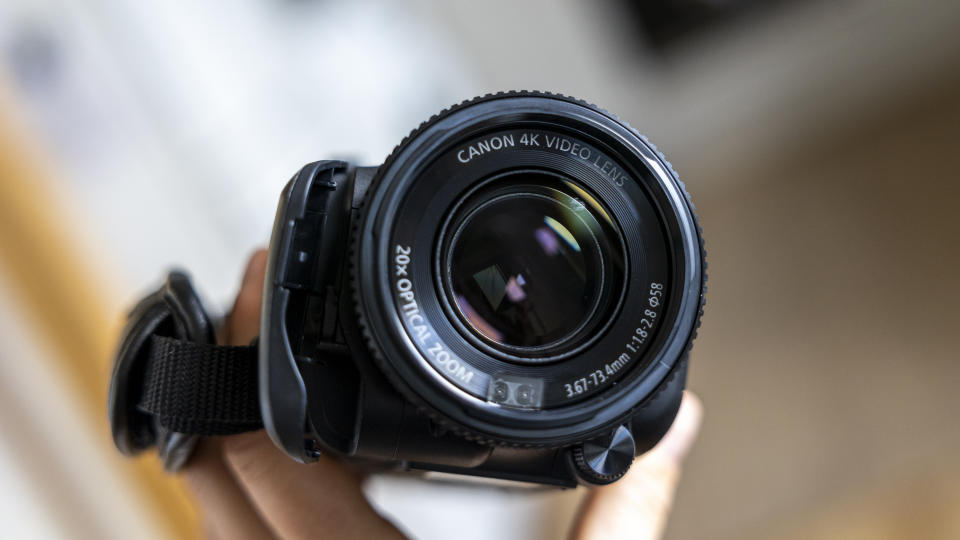
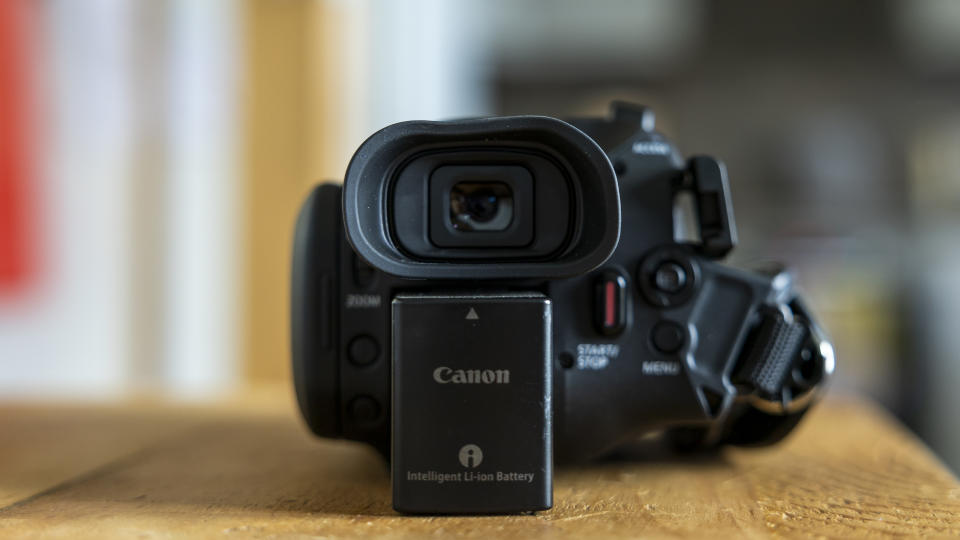
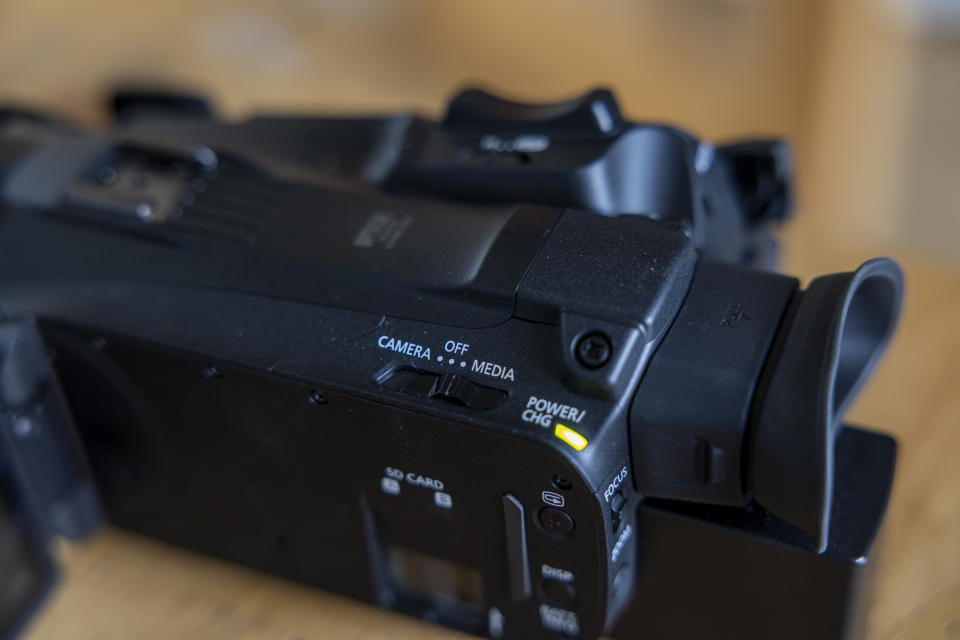
Canon HF G70: Design & Handling
The Canon HF G70 instantly reminds me of the handy cams of the 00s – in my case, the ones my parents used and I borrowed. It has a long body designed to be held with one hand and a soft adjustable strap for your right hand to clasp the body securely. There's also a tripod mount on the bottom of the camera should you want to keep it fixed, or at a desktop setup for streaming.
The larger 3.5-inch touchscreen pulls out from the body, and it can be fully tilted and flipped towards you for recording pieces to camera or vlogs – selfie videos, in other words. I found it responsive to use and could navigate settings while wearing gloves during a snap of cold weather. Being picky, I would have liked the screen to snap into place more securely so that it doesn't get folded back at the slightest bit of pressure. The HF G70 takes two SD memory cards supporting backup and relay recording, and these slots are easily accessed on the left of the body.
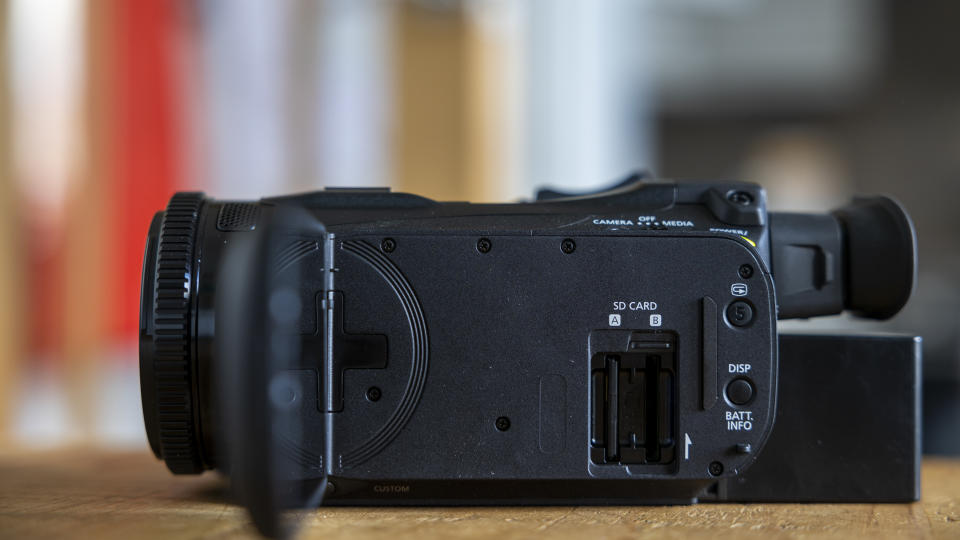
The HF G70 comes with a traditional lens cap as well as a hood mount with a built-in lens cap that flaps over. Both are straightforward, and the flap lets you get filming quickly. On the rear, the battery sits just below the 0.36-inch electronic viewfinder - strange if you're used to it being tucked away inside a camera – but it didn't get in the way as I'd expected.
When it comes to connectivity, there's a solo USB-C power port at the rear, which works with a mains adapter or power bank. Unlike some cameras, this means you can power up the camera with the battery attached, and charge while filming. At the front flap, there's a handy second USB-C/Thunderbolt port for connection to a laptop or PC, a mini-HDMI port for TVS – a full HDMI would have been more convenient – a remote control port and separate 3.5mm ports for a microphone and headphones.
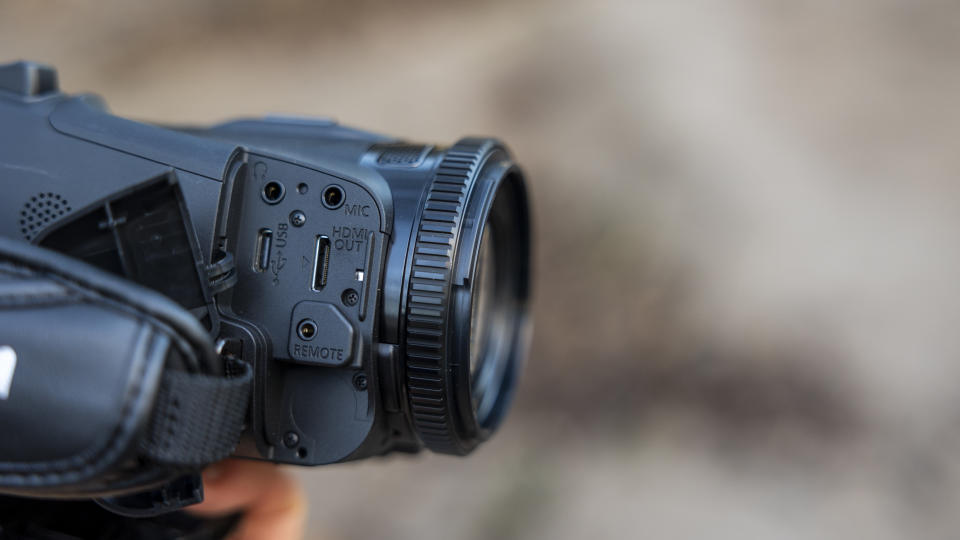
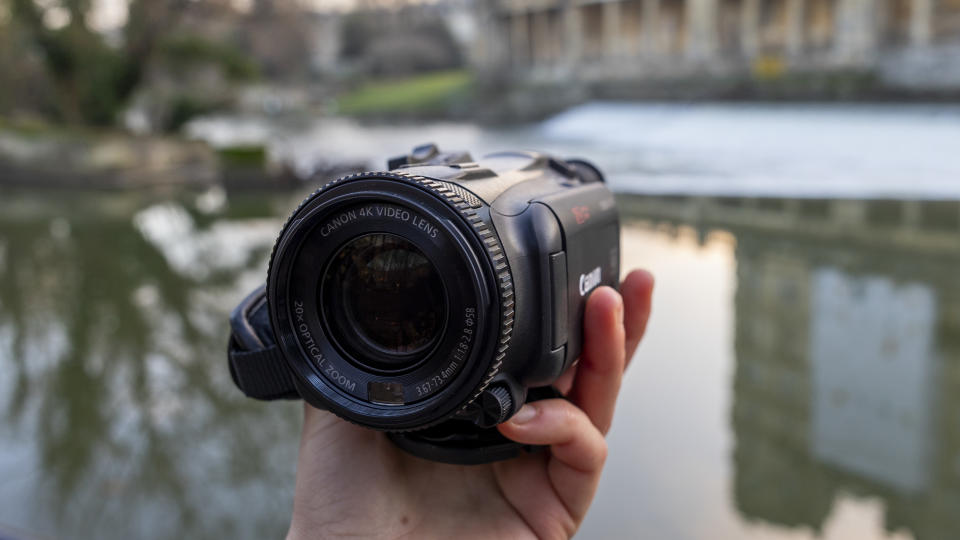
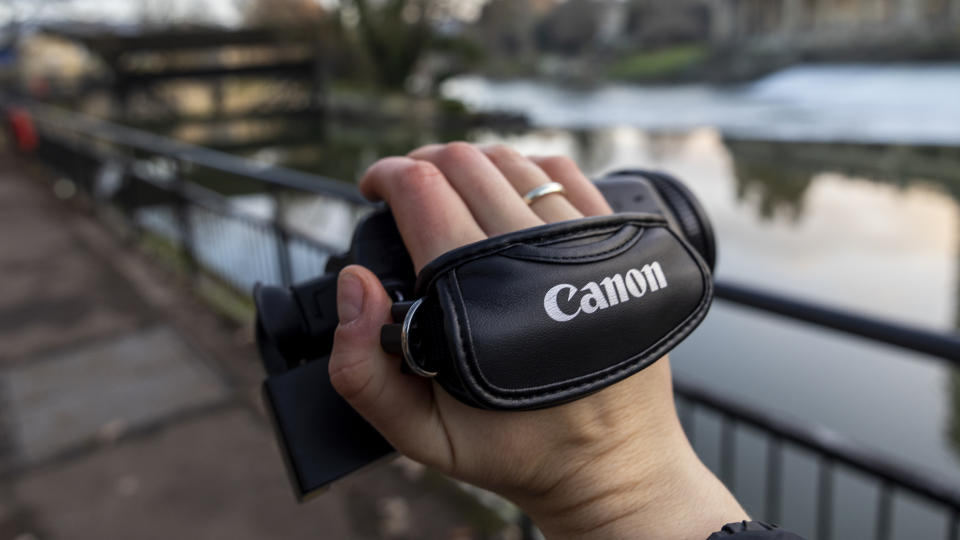
Being a camcorder, controls are more sparse than a hybrid mirrorless camera. To the right of the viewfinder, you'll find a raised record button, a menu button, and a joystick to toggle through menus. I have two main grumbles here; the menu button itself was awkward to reach down and press, and I couldn't use the camera one-handed to change settings. When navigating through menus, I had to support the camcorder with my left hand as it rolled away from me otherwise. Up top is a zoom rocker – smooth enough at different pressures – and a small switch to toggle between Auto and Manual focus. A similarly tactile off/camera/media switch top left lets you go from recording to playback mode. This is best done with your left hand, and I did notice a delay when switching between them.
You can assign five (labeled) buttons on the Canon HF G70 with customized functions such as white balance or markers. However, there's only one record button, and as I've already described, it's around the back. This is let down if you're predominantly shooting in front of the camera, as it's almost impossible to reach from that position. The screen itself has two of these customizable buttons, and not being able to set them to record feels like an oversight for handling. Of course, if you're using the camera with a remote, or software to start and stop footage, this won't be so much of an issue.


Canon HF G70: Performance
Overall, I was pleasantly surprised at the quality of the footage straight out of the HF G70, but that's probably more to do with my low expectations of what an amateur camcorder can do rather than it excelling in any given area. The Canon EOS R6 is my main camera for stills and video, and while the quoted stabilization from the HF G70 is on par with that (5-axis IBIS) on paper, the real-world results didn't always match up, as my Canon RF 24-70mm zoom lens has stabilization, too. Still, the stability is a million miles better than the camcorders of old if you're shooting handheld, and I was able to wander around a Christmas market at night and still take some usable footage. Dynamic stabilization allowed fairly sharp walking shots, but I'd recommend a gimbal for professional applications like reportage or wedding videos.
In terms of subjective picture quality, the footage was noticeably muddy at night, which is to be expected given the sensor size. It's worth bearing in mind that you only get the option to shoot in an MP4 file format, with a maximum resolution of 3840 x 2160 (and 25P), and it's the same for stills, only with JPG format, no RAW – making the editing of both mediums very limited. Without Canon Log you won't be able to color-match as easily with other cameras, although the custom picture menu does allow you to tailor in settings slightly. You also have to drop the resolution to 1920 x 1080 to get 50P, which limits the quality further.
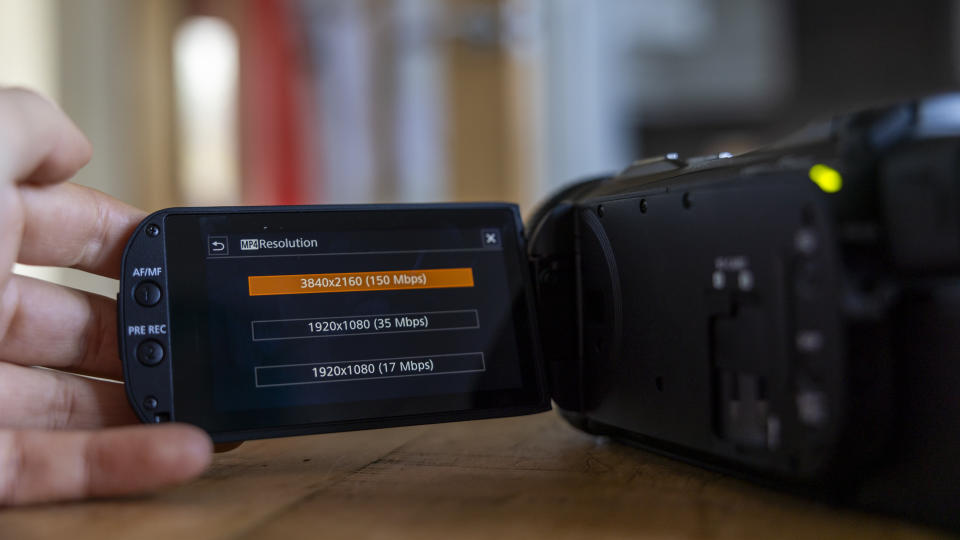
As someone used to mirrorless video, at first I missed the ability to change lenses with the HF G70. However, there's no denying that the camcorder's 20x optical zoom has huge reach and versatility, especially if you're a videographer wanting catch-all coverage without any faff. I think that's the main benefit of buying it over a mirrorless or even smartphone, and the zoom motion is relatively smooth across the range – with the High Speed and Soft Zoom options working well when you want to vary the rate of focus transition for different applications. Despite Canon's claims of cinema-style bokeh with the 8-blade aperture, it wasn't as pronounced as I'd have liked.
Speaking of the Hybrid autofocus, the minimum focus distance is just 1cm at the widest end of the zoom, and 60 cm across the entire zoom range, which I found helpful for close-ups and detailed B-roll footage. It's nice to be able to focus manually using a ring on the lens, with tactile grooves aiding smooth movements. I often used the touchscreen for AF point selection, but face detection was also very usable, looking on 90% of the time for vlogs – albeit without the lightning-face eye-detection precision I'd get from Canon's mirrorless cameras. In busy street scenes or high-contrast lighting, the camera lens hunted in a way I haven't seen since using a DSLR – but when locked onto a target, it kept up admirably. It also lacked the precision to find smaller subjects; I couldn't focus on a robin at around 10x zoom, no matter how many times I tapped on the subject on the screen. For sports, the camera's autofocus will keep up at a wide angle, but you can't track the movements of fast players accurately across a football pitch, for example.
On the Canon HF G70, you get several exposure modes to choose from; center-weighted average metering and Auto, the usual P, Av, and Tv, as well as Portrait, Sports, Low Light, and IR modes. I didn't test out these niche modes like Snow or Beach (I didn't get the opportunity, sadly) but center-weighted metering was good, with a slight tendency to overexpose in sunlight – nothing that exposure compensation or the built-in ND filters couldn't fix.
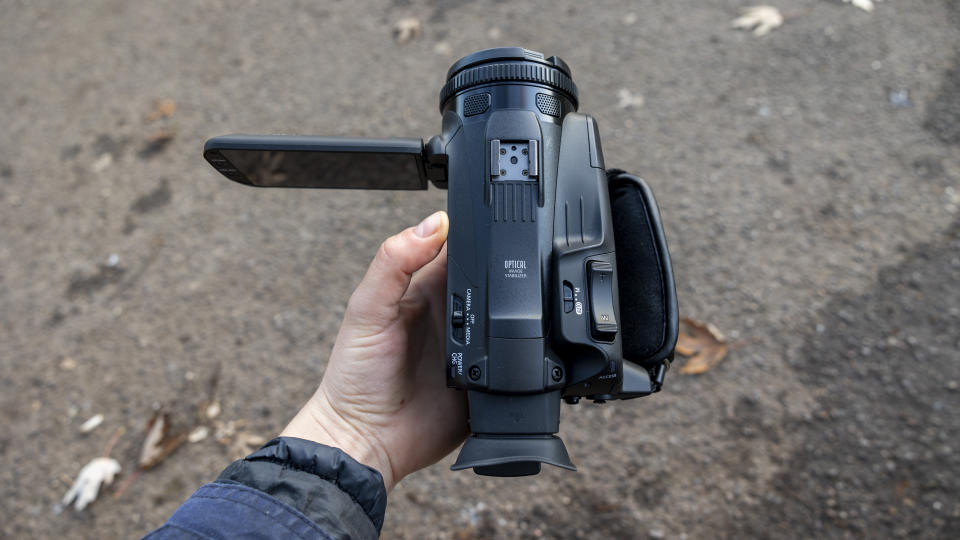
I focused more on visuals than audio during my time with the HF G70, but the stereo condenser mic did an okay job of picking up vocals and ambient sound. Although background noise was an issue If I was going to use this camcorder for paid work, I'd plonk one of the best shotgun mics on top for a better outcome.
The HF G70 ships with the Canon BP-820, but an optional (slightly bigger) BP-828 is also available separately. When recording video in UHD/25p, Canon quotes the typical battery life at around 95 minutes. Given that an hour's recording (in cold weather) saw a drop off in power by about three-quarters, I'd say this was fairly accurate. You'll want a few spares if you're planning to be out all day, but if you're shooting videos at home, rigging the camera up to a USB-C for charging means you can film as long as you want to without ever thinking about running out of juice. I've not come across a mirrorless camera with two separate USB-C ports – for charging and connecting to a computer – and this is something I'd like to see more often.
The HF G70's form factor made it incredibly easy to get run and gun footage in a city. But it's worth saying that with this camcorder, I felt much more conspicuous filming in public than I would have done with my iPhone or even with a bulky mirrorless camera. You stand out with a camcorder, even one as compact as the Canon HF G70, and that's something to bear in mind if you're after subtle footage, or you don't enjoy being looked at. If you're just going to be in your home office or studio filming video diaries, that's not a problem.
Canon HF G70: Sample video
Over a few weeks, I carried the Canon HF G70 in my bag (because it's small enough to fit in a satchel) and created dozens of clips in a range of scenarios. I shot footage indoors and outdoors in low light, outside in bright light, and under artificial LED lights while the camcorder was rigged up to my iMac – to replicate the type of setup you might have as a vlogger or YouTuber. All of these shots are handheld, using the HF G70's built-in microphone. The loud noise coming from some clips is the result of shooting near a weir.
Canon HF G70: Final Verdict
The Canon HF G70 is the right choice if you want a good-quality video camera that's easy to use straight out of the box. I can see it being popular with wedding photographers who use a DSLR or advanced mirrorless for the stills side of the day but want a dedicated camera for video only. The controls aren't perfect, but the five assignable buttons do add a decent level of customization.
Given the lack of Wi-Fi connectivity, I can't see the HF G70's interesting content creators. And as there's no serious waterproofing, it's not a great fit for outdoor filmmakers either. If you're serious about video production, hybrids like the Panasonic Lumix S5 offer interchangeable lenses, greater durability, and a myriad of different filming formats. And they also serve as excellent stills cameras, which the HF G70 isn't designed for.
The Canon HF G70 is ideal for people who want a camcorder around the $1k/£1k mark, but I still find it hard to recommend. And that's purely because Canon's enthusiast EOS R mirrorless models are so good at video and stills. Even so, the HF G70 will appeal to a lot of people – people like my parents – who are familiar with the way that a camcorder works and handles, and don't want or need extra video modes, codecs, or formats for intense editing.
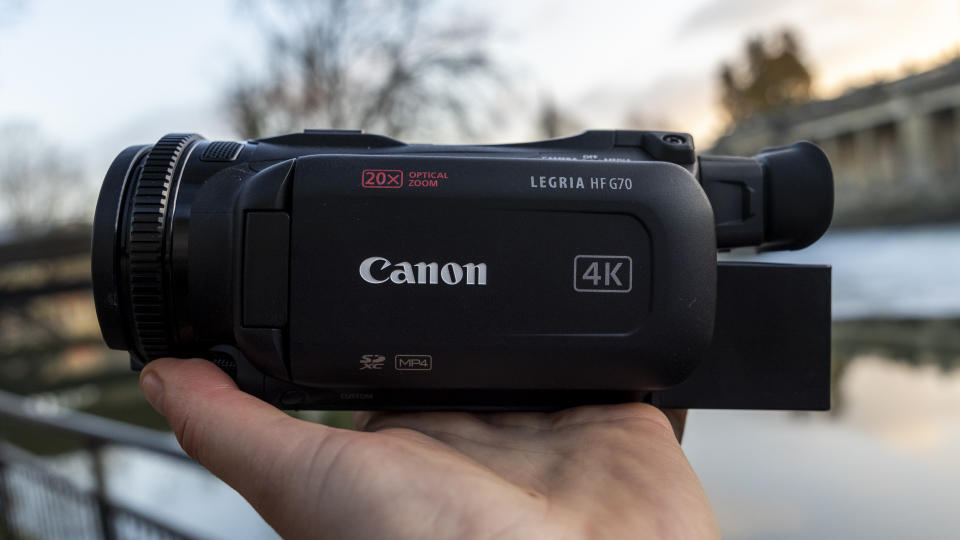
Should you buy the Canon HF G70?
✅ Buy this if...
You want a long, built-in zoom
Compact sizing is important to you
You like the handling of a traditional camcorder
🚫 Don't buy this if...
You want to share videos to your social channels instantly
You want to change your lenses
You want high-quality stills
Alternatives

The Sony FDR-AX43 is an affordable camcorder that matches the Canon HF G70 in many ways. Although the LCD is slightly smaller, you get the same 4K Ultra HD resolution recording, 5-axis image stabilization and a 20x optical zoom for around half the cost.

The Fujifilm X-S20 is the ultimate hybrid if you want high-quality stills as well as video. It's a similar price (body-only) to the HF G70, but video quality is better at 6.2K/30p and you get the versatility of interchangeable lenses. You won’t get such a long zoom range without a pricy telephoto lens.

